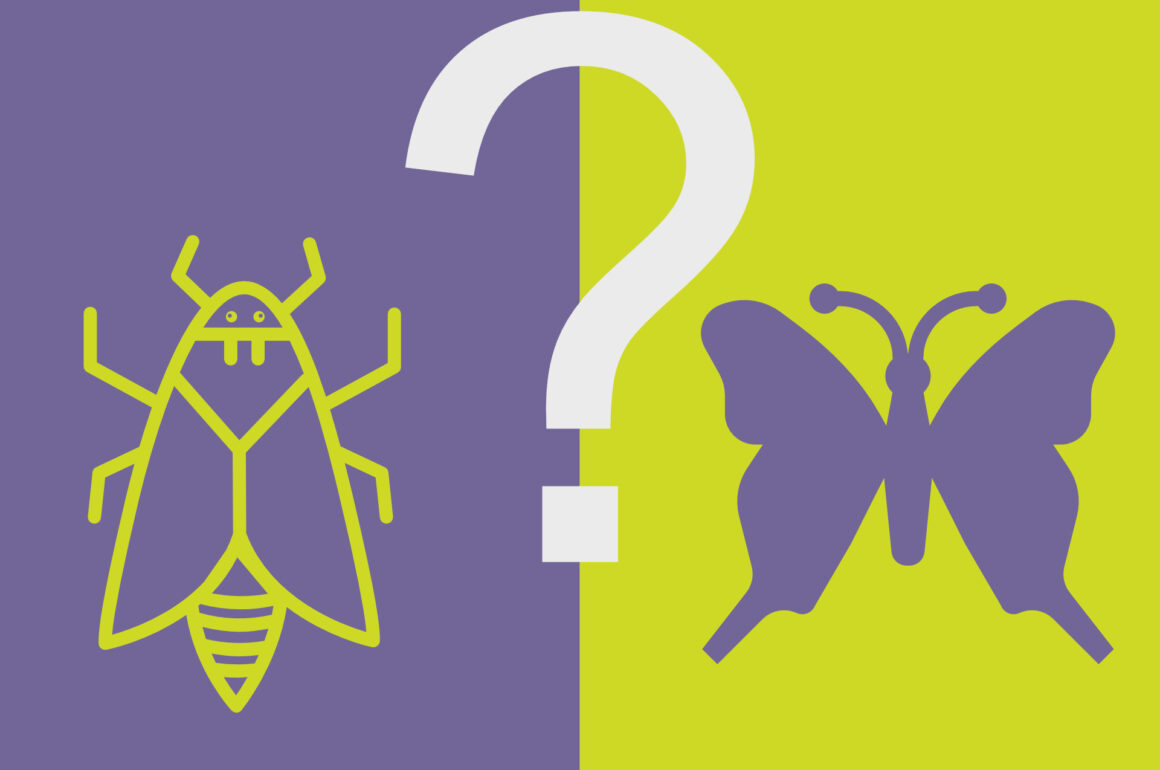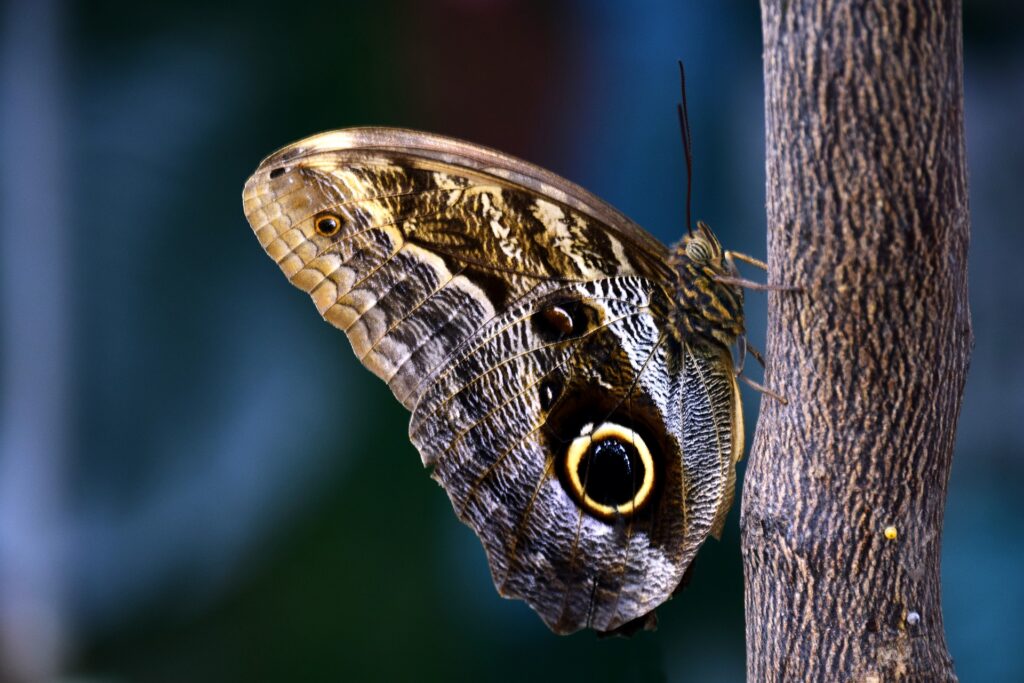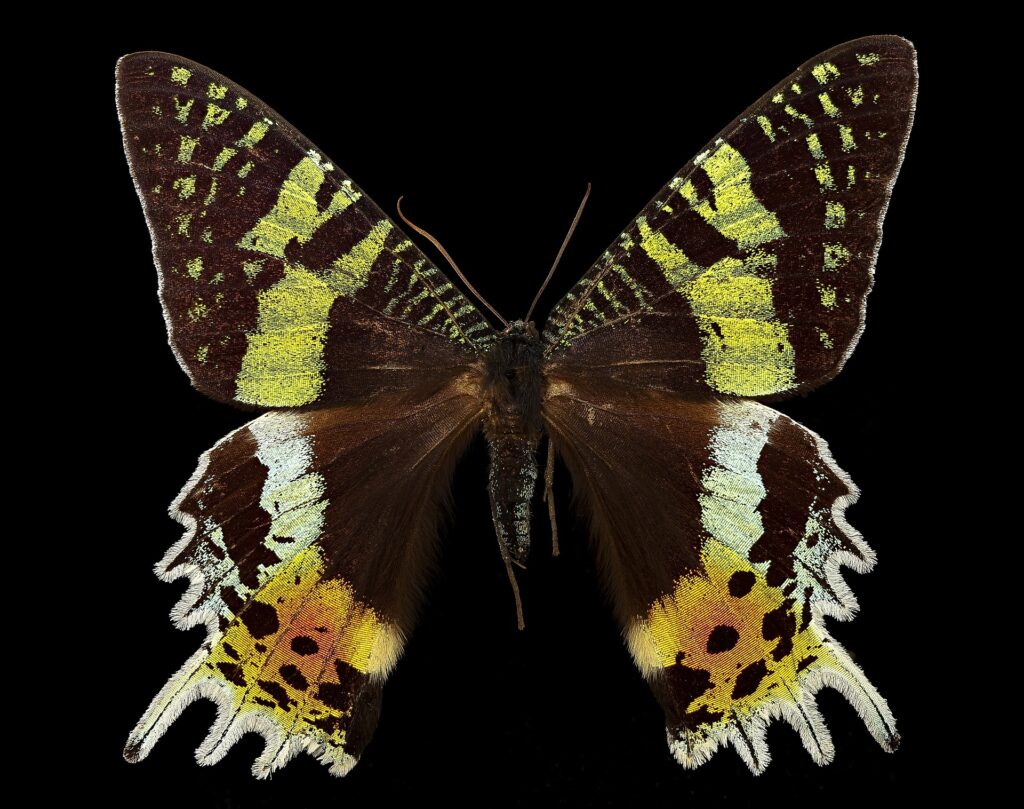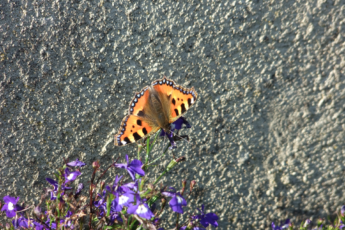
I love moths – I think they are even more beautiful than butterflies and are very underrated, which is surprising given that there are approximately 1350 types of moth here in Ireland, compared to about 35 types of butterfly! I came across the question “do moths turn into butterflies?” the other day in Google, and it got me thinking that maybe some people don’t know that much about moths, and so could be forgiven for thinking they are the same as butterflies.
However, no. Moths and butterflies are not the same and moths do NOT turn into butterflies! Moth caterpillars turn into moths, and butterfly caterpillars turn into butterflies … so why do so many people get the two confused?
Technically speaking moths are and probably always will be moths – but it may come as a surprise to know that it’s not always been like that… evolution has played a part in the separation of moths and butterflies – read on to find out what I mean!
Are moths in the same family as butterflies?
To begin with you might have thought moths and butterflies are one and the same as they are both members of the same family – the Lepidoptera family. In Ancient Greek, Lepidoptera means ‘scale wing’, which is a good name given the powdery scales that cover the bodies and wings of moths and butterflies. These powdery scales are actually modified hairs and will often come off when touched.
During its lifetime a butterfly will naturally shed these scales, and so the common myth that if you touch a butterfly’s wings and the ‘powder’ rubs off that the butterfly will not be able to fly, is not true – the butterfly should still be able to fly.
So, we know that moths don’t turn into butterflies and that they are part of the same family, but what about their history? How did moths evolve?
In the beginning…
It turns out moths evolved way before butterflies! Archaeological finds have placed the ancestors of moths on earth around 150 – 200 million years ago. Whereas true butterflies evolved from moth-like ancestors around 98 million years ago.
How did moths evolve?
It is well known that moths have to be careful of bats as they are one of its main predators, however I recently read an article explaining how both bats and moths have evolved to try to outwit each other. It was also thought that one group of moths wanting to evade bats started flying during the day and that’s how butterflies came into being.
The article then went on to explain, however, that it wasn’t the bats that drove them to it. This one group of moths switched to flying during the day in order to get the nectar which was being produced by the many new species of flowering plants, and so evolved into butterflies.
You can read the full article here.
The difference between moths and butterflies
Although there are certain types of moth that look similar to a butterfly and vice versa, (the Skipper as an example), there are several differences between them. I’ve split these into 2 tables below, one showing the behavioural differences and the other showing the physical differences.
Behavioural differences between a moth and butterfly:
| MOTH | BUTTERFLY |
| Mainly active at night | Mainly active during the day |
| When resting, wings are held to the side of the body | When resting, wings are folded together in an upright position – unless they are warming themselves in the sun |
| Will spin silk around their cocoons when pupating | Pupates as a bare, hard, smooth chrysalis |
| Will move its wings to raise its body temperature | Uses the sun to warm up |
| Can detect sound with its ears | Has no ears so uses its wings to feel vibrations |
Physical differences between a moth and butterfly:
| MOTH | BUTTERFLY |
| Antennae are usually feathery or comb-like | Antennae are wider at the tip and have a small bulb at the end |
| Wings are often drab so as to camouflage easily during the day | Wings are colourful and generally bright |
| Have a structure called a frenulum which connects its front and rear wings, so they can work in unison during flight | Doesn’t have these structures |
| Body is stout and fuzzy | Body is slender and smooth |
However, sometimes you come across moths which are an exception to the rule, for example there are day flying moths such as the ones listed in this downloadable PDF guide from Butterfly Conservation.
Another example is the Cinnabar moth which flies in the sun during the day, but can also be found flying after dark. They are easy to spot in gardens and are commonly found on grassland. I’ve had several of these in my own garden for the last few years… and a lot of their caterpillars!
There are also butterflies that fly at dawn and dusk, such as the Owl butterfly below, which flies at dusk in order to avoid bird predation…

…and the Madagascan Sunset Moth which is very brightly coloured and is active during the day.

So the next time you see something fluttering around the flowers or grass during the day and immediately think it’s a butterfly, take another look as it may be a day flying moth 🙂



